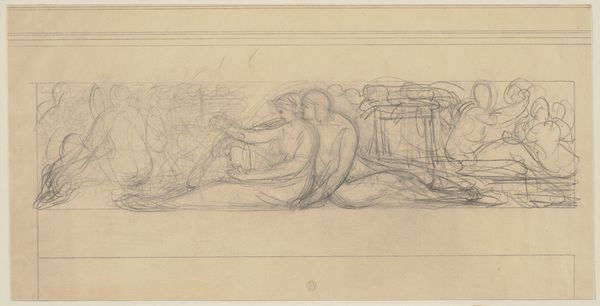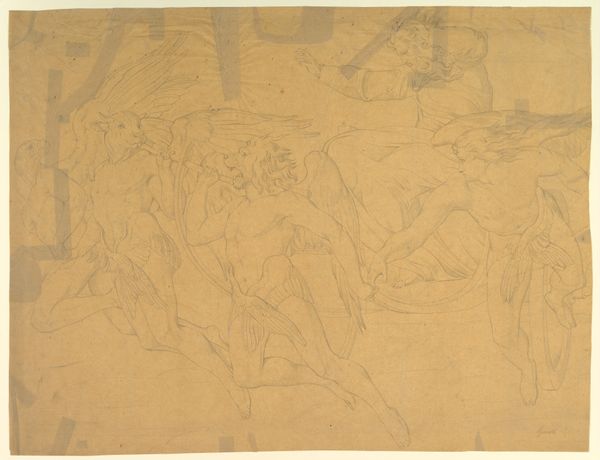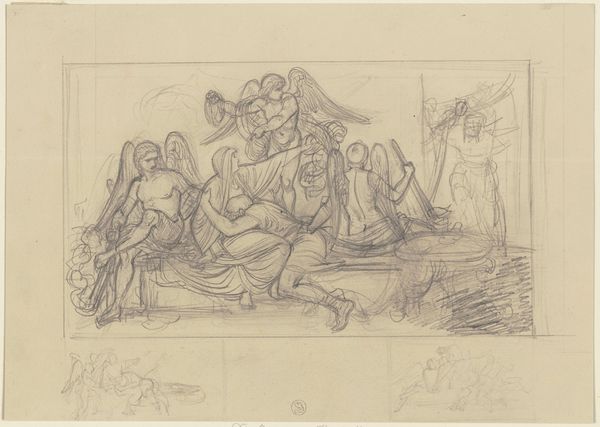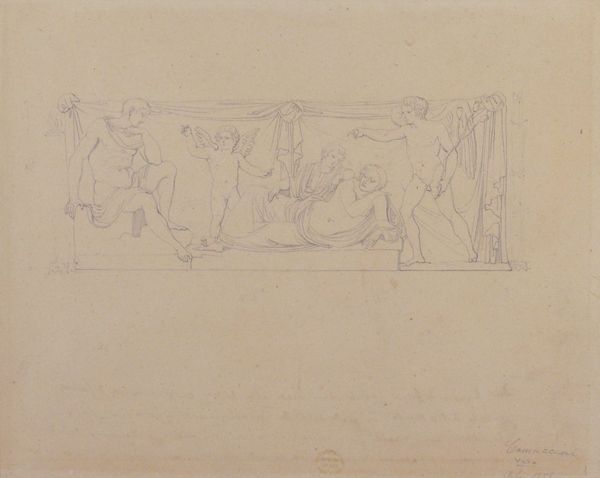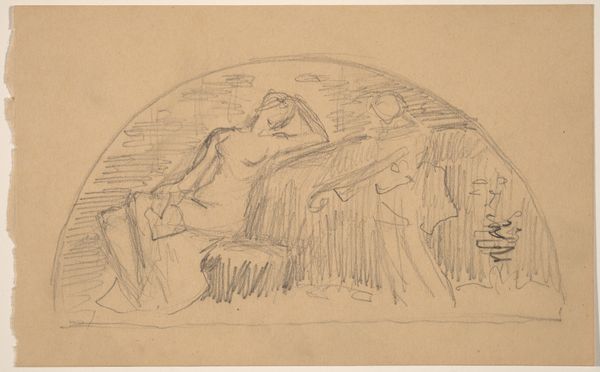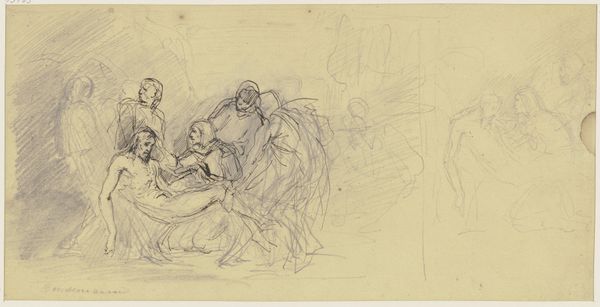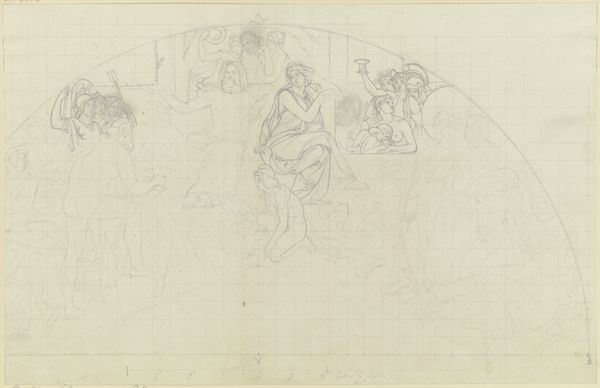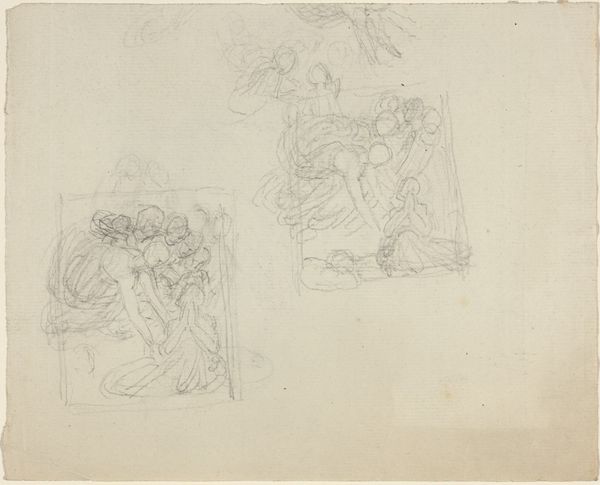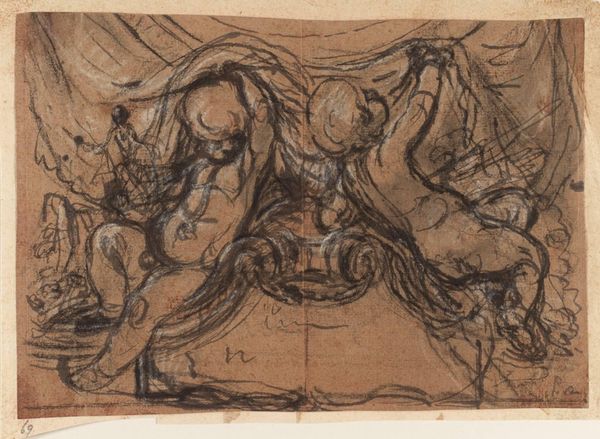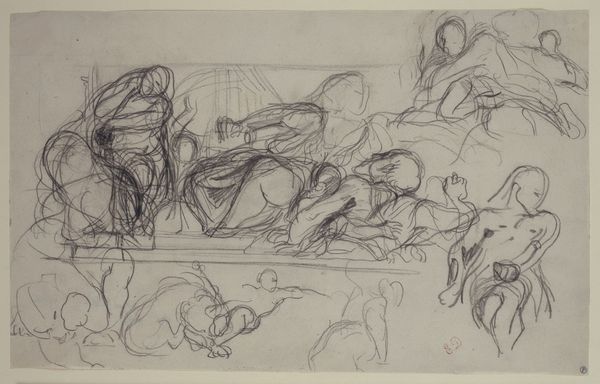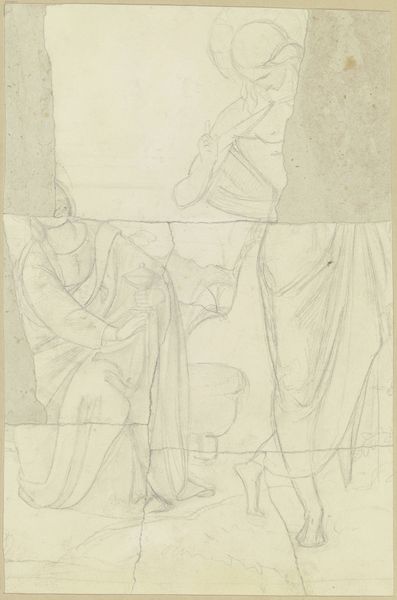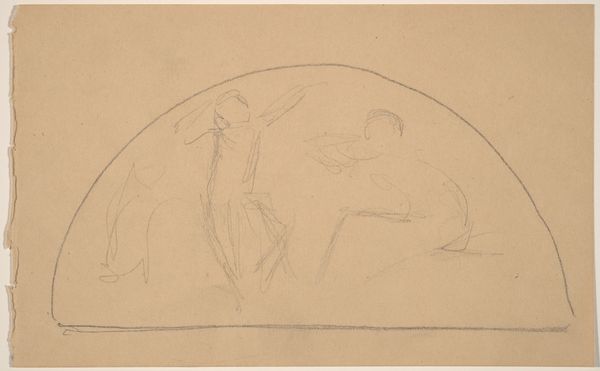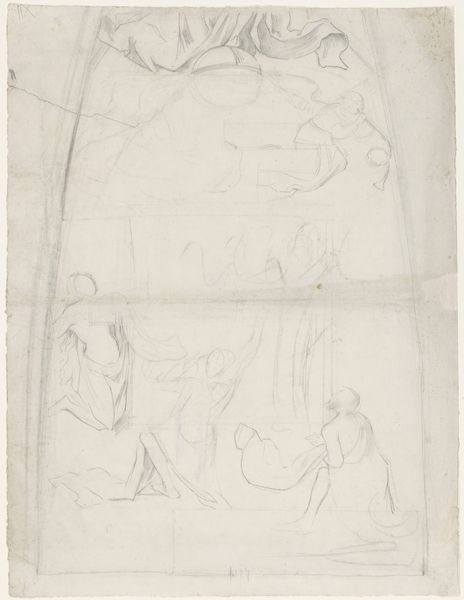
drawing, pencil, graphite
#
drawing
#
16_19th-century
#
narrative-art
#
pencil sketch
#
classical-realism
#
figuration
#
form
#
ancient-mediterranean
#
pencil
#
line
#
graphite
#
history-painting
#
academic-art
Copyright: Public Domain
Curator: We're looking at a pencil drawing titled "Prometheus and Athena Creating Mankind" by Bernhard Neher the Younger. It's part of the Städel Museum's collection. Editor: My initial feeling is one of striving, of aspiration. It has that slightly unfinished, sketch-like quality, yet the figures are so deliberately positioned, almost classical in their arrangement. Curator: Indeed, the drawing showcases the popular 19th-century artistic interest in classical narratives, particularly the role of mythology in establishing social norms and civic virtue. You can clearly see the influence of academic art traditions here. The drawing method, with its emphasis on line, highlights the clarity of form, fitting within the stylistic pursuit of ancient Greek and Roman ideals. Editor: Prometheus is of course an enduring symbol of ingenuity, rebellion, and sacrifice, embodying a quest for knowledge and progress. His partnership here with Athena, the goddess of wisdom and strategic warfare, highlights an ideal blend of craft and intellect. In that meeting, they form something entirely new – humanity, made complete by divine blessing. I see in the tableau an almost religious significance of collaboration, elevating it beyond a simple mythological episode into a founding parable of civilization. Curator: The context of Neher's work as part of history painting is key. These images were tools in a larger cultural project, reinforcing narratives of Western superiority rooted in Graeco-Roman antiquity. It presents us with idealized figures, influencing contemporary aesthetic values and concepts of what humanity could, or should, be. The narrative itself reinforces social power dynamics. Editor: It makes you wonder about the cultural assumptions baked into even the most foundational myths. How the ideals of those ancient gods and heroes continue to resonate and shape our understanding of human potential. And the inherent biases present, now made increasingly apparent. Curator: It underscores how art acts not just as a reflection but also as a perpetuator of socio-political norms. The way these images circulate through museums reinforces certain cultural values and ways of understanding the world. Editor: Looking at it now, knowing its purpose and the history it attempts to reinforce makes me wonder how many other symbols continue to perpetuate ideals and histories that are in dire need of modern reevaluation. Curator: It's fascinating how an image from the 19th century continues to prompt conversations about the politics of representation and the lasting impact of historical narratives. Editor: Absolutely. A valuable reminder that even sketches of gods and men can carry a profound cultural weight.
Comments
No comments
Be the first to comment and join the conversation on the ultimate creative platform.
